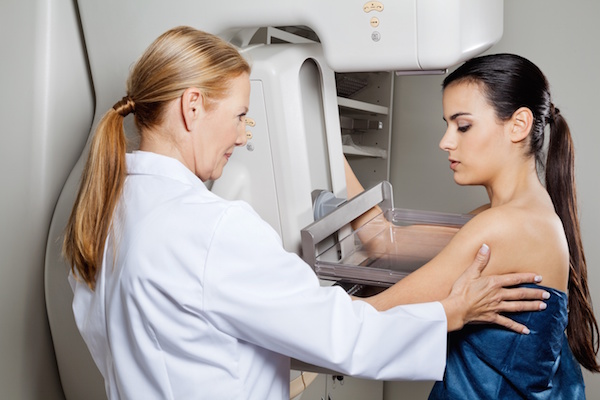SATURDAY, June 4, 2016 (HealthDay News) — Biopsies can be arduous and painful for cancer patients, but necessary to accurately diagnose the disease and determine the best course of treatment.
Now, researchers report that a new blood-based “liquid biopsy” seems to be a groundbreaking alternative.
Doctors used blood drawn from a patient’s arm to analyze DNA that tumors typically shed into the bloodstream, explained lead researcher Philip Mack. He is director of molecular pharmacology at the University of California, Davis, Comprehensive Cancer Center.
A study of more than 15,000 patients with 50 different tumor types determined that liquid biopsy can detect mutations in cancer DNA from 94 percent to 100 percent of the time, Mack said.
“If we saw a mutation in the plasma, that meant it was in the tumor,” said Mack, who was to present the findings this weekend at the American Society of Clinical Oncology annual meeting, in Chicago.
Dr. Joshua Brody, director of the Lymphoma Immunotherapy Program at Mount Sinai’s Tisch Cancer Institute in New York City, called the research “a big deal. This will be practice-changing.”
“This is not quite a Star Trek medical magic wand, but it’s getting towards there,” Brody said.
Researchers used a new genetic scan called Guardant360 to analyze cancer DNA in patients’ blood. The study received funding from Guardant Health Inc., which produces the test used in the study.
Liquid biopsies provide valuable information for doctors using targeted therapies to treat cancer, Mack said, because they detect when tumors are developing resistance to a particular therapy.
Tumors develop resistance “through the acquisition of new mutations that allow it to circumvent or otherwise ignore a therapeutic option,” Mack said. “If we identify what that mutation is, we can treat with a different therapy.”
In the study, the most common types of cancer were advanced lung cancer (37 percent), breast cancer (14 percent) and colorectal cancer (10 percent).
It’s been known for decades that tumors release their DNA into the bloodstream, particularly in advanced cases where cancer has spread to other parts of the body, Mack said.
“The question has always been whether this can serve as an alternative to a biopsy for diagnosis and for the assignment of appropriate targeted therapy,” Mack said.
Mack and his colleagues found that genetic analysis of blood-borne cancer DNA very accurately detected cancer-causing mutations that were also found in tumor tissue samples.
They also found that the test could detect genetic changes in a cancer that occur as tumors gain resistance to targeted cancer drugs.
Overall, the liquid biopsy revealed possible treatment options for more than 63 percent of patients tested, including FDA-approved drugs as well as eligibility for clinical trials.
Mack expects the cost of a liquid biopsy to be competitive with that of a traditional tissue biopsy, since a blood draw costs less than the cost of an invasive procedure and subsequent processing of dissected tissue.
However, at this point Mack believes a liquid biopsy cannot replace a tissue biopsy when it comes to an initial diagnosis of cancer.
“At this point, we cannot dispense with that initial tumor biopsy,” he said. “The initial biopsy and subsequent pathology are what allow us to determine what type of cancer it is and whether it is even cancer at all. That will still be necessary.”
“A trained medical pathologist can tell you most of the time what kind of tumor it is based on how the cells look and behave in a tissue sample,” Mack continued. “They can say, ‘Even though we pulled this from a lesion on your liver, it’s actually lung cancer.’ “
Mack believes the real value of liquid biopsy will show itself as a patient’s cancer treatment proceeds.
Most patients never undergo a second tissue biopsy during treatment to check their progress, “unless there’s a compelling therapeutic option available,” he said.
Liquid biopsy provides an easier way to keep track of treatment. “You can get a blood draw basically at any time, so you can really monitor the progression of a patient’s tumor over time,” Mack said.
But Brody believes liquid biopsy can also serve as a valuable alternative to tissue biopsy for cancer diagnosis in particular patients.
“We have lots of older or less healthy patients who simply are not great candidates for surgery,” Brody said. “For them, it’s not this [liquid biopsy] versus tissue biopsy. It’s this versus nothing.”
Dr. Sumanta Pal, a medical oncologist with City of Hope National Medical Center in Duarte, Calif., agreed with Brody, noting that tissue biopsies can be very difficult to perform in cancers that have spread to the brain or the bone. Some patients also may have a bleeding risk that makes tissue biopsy a dangerous option.
“There are many different scenarios where I can imagine this test would be clinically meaningful for diagnosis,” Pal said.
Several competing liquid biopsy tests are currently available or under development, Pal added.
While this study focused on gene-based cancer treatment, Brody believes a liquid biopsy also will prove valuable for therapies that use the body’s immune system to target cancer cells.
“We will be able to develop similar tests to predict patients’ response to immunotherapies,” he said.
More information
Visit the American Cancer Society for more on cancer biopsy.
Copyright © 2025 HealthDay. All rights reserved.

